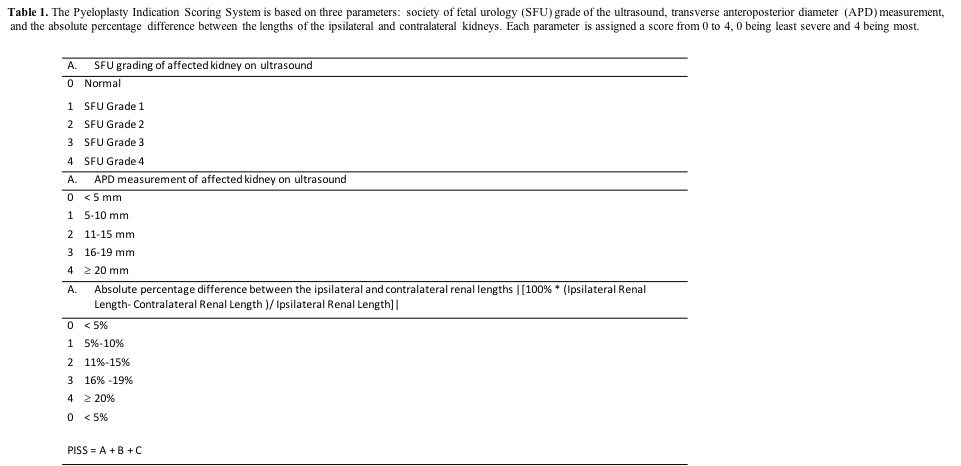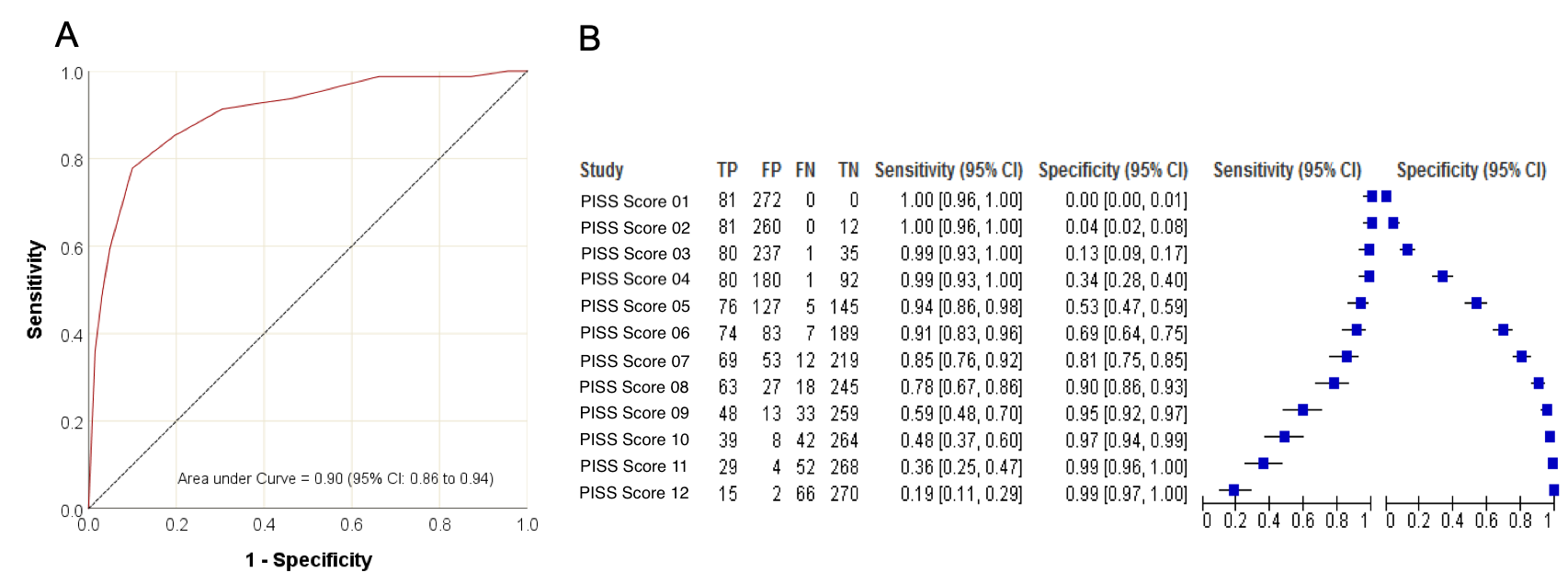ULTRASOUND BASED SCORING SYSTEM FOR EARLY INDICATION OF PYELOPLASTY IN PATIENTS WITH UPJO-LIKE
Smruthi Ramesh, BHSc, Will Luke MD, Melissa McGrath, BASc, Forough Farrokhyar, MPhil, PhD, Roseanne Ferriera, MD, Luis H. Braga, MD, PhD.
McMaster University, Hamilton, ON, Canada.
BACKGROUND: Previous scoring systems to assess severity of UPJO-like and potential indications for pyeloplasty have heavily relied on scintigraphy parameters, however renal scan interpretation is not always reliable due to protocol variation across centers and intrinsic renogram limitations. Therefore, we sought to evaluate a pyeloplasty indication scoring system (PISS), which utilizes only baseline ultrasound measurements to predict the likelihood of pyeloplasty in infants with UPJO-like.
METHODS: PISS was developed using three ultrasonographic parameters, SFU grade, transverse APD of renal pelvis and the absolute percentage difference of ipsilateral and contralateral renal lengths at baseline, for a maximum score of 12 (Table 1). PISS was evaluated using prospectively collected prenatal hydronephrosis data (n=928) of patients with UPJO-like. Children with VUR, primary megaureter, other associated anomalies, bilateral HN and < 3 months of follow-up were excluded. Scores were analyzed regarding its usefulness in predicting which patients would be more likely to undergo pyeloplasty. Sensitivity, specificity, likelihood ratios (LR) and receiver operating characteristic (ROC) curve were determined.
RESULTS: Of 353 patients, 275 (78%) were male, 268 (76%) had left UPJO-like, and 81 (23%) had a pyeloplasty. The median age at baseline (initial consultation) was 3 months (IQR 1-5). The PISS was highly accurate in distinguishing patients who underwent pyeloplasty from those who were managed non-surgically, using only baseline ultrasound measurements (AUC: 0.902) (Figure 1.A). Pyeloplasty indication scores of 7 and 8 were found to have a sensitivity of 85% and 78%, and specificity of 81% and 90% respectively (Figure 1.B). A score of 8 was associated with a LR of 7.8, indicating that these patients were 8 times more likely to undergo pyeloplasty.
CONCLUSION: Overall, PISS was capable of detecting patients more likely to undergo pyeloplasty using baseline ultrasound measurements. Those with a score of 8 or higher were 8 times more likely to undergo surgical intervention. This information may help inform follow-up interval between consultations for UPJO-like patients, as well as council families regarding potential need for surgery. 

Back to 2019 Abstracts




